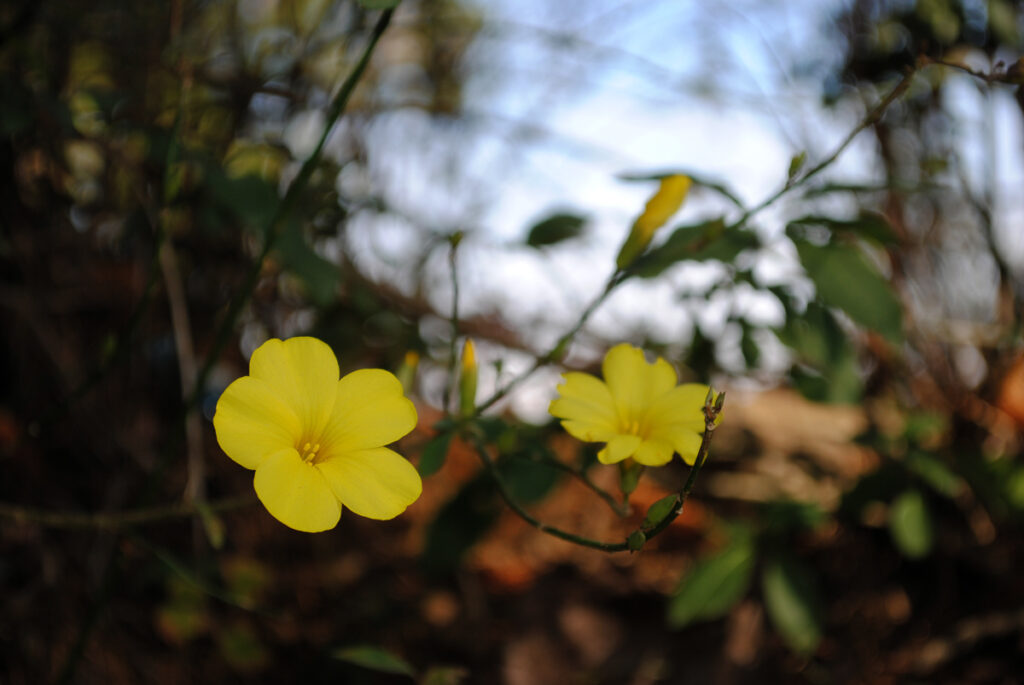
Reinwardtia indica, (yellow flax or pyoli), is a shrub with a bright yellow flower found in the Himalayas
Vasanthi shares her experience of nurturing a grounded textile enterprise in Uttarakhand.
Peoli is a wild yellow flower, which blooms during the spring all along the hills of Uttarakhand. The bright yellow is a symbol of hope and warmth when it appears after the long harsh winter; hence the Peoli flower holds a valuable place in local folklore.
Uttarakhand (located in Northern India) – mountain state is blessed with a bounty of natural resources – fresh air, dense oak forests and crystal clear water streams. Unfortunately, this natural abundance is being affected by extreme weather conditions caused by climate change, depletion of the water table due to an increase in population and poor access to basic necessities of life like healthcare and education.
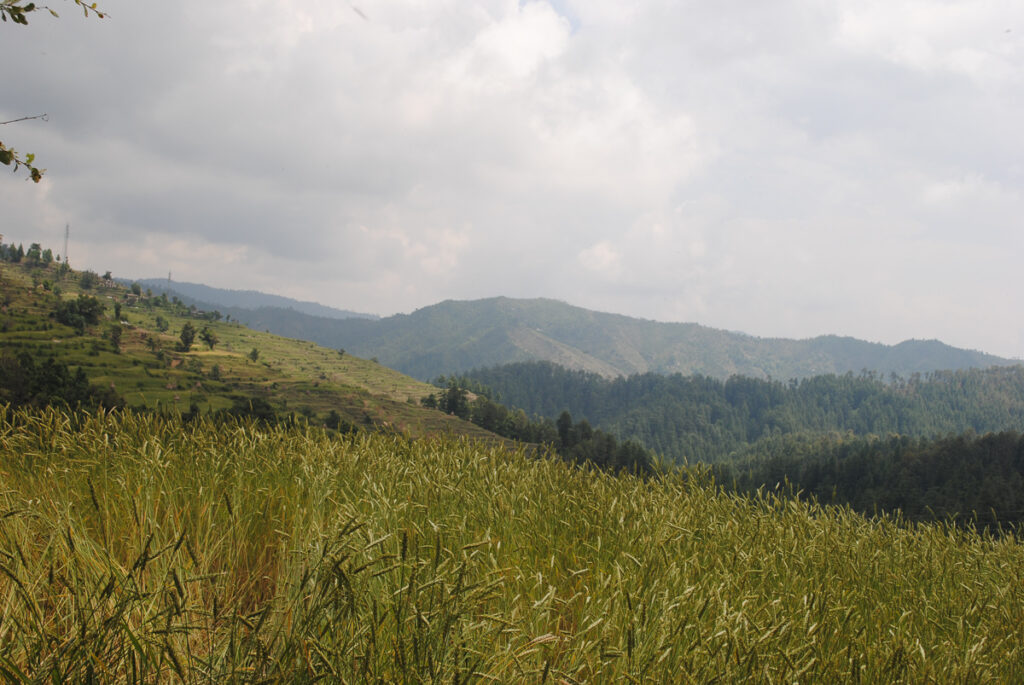
The Himalayan landscape that we are surrounded by inspires us for a synergy with nature in a way which can celebrate each other, while mutually thriving, Almora, Uttarakhand.
Migration has outpaced population growth in many of the districts. In the last ten years, in the district of Almora alone, over 53,000 people have migrated on a semi-permanent basis citing lack of agricultural land as one of the major reasons. The absence of alternative means of livelihood has forced people to relocate to urban cities or remain unemployed. This is causing a rapid depletion of skills in the region, which was traditionally known to rank high on social indices. In the local markets, inexpensive machine-made goods, popular due to their cost and aspirational value have replaced the indigenously produced items, which would otherwise have sustained the local economy.
Borrowing our name and philosophy from nature and the local wildflower peoli, my fellow-batchmate and design graduate from the National Institute of Design, Abhinav Dhoundiyal and I, Vasanthi Veluri set up our brand in 2015. Our aim was to revisit indigenous craft traditions and propose an alternative way of producing garments with a lighter carbon footprint through our standardized hand processes and address a growing need in the market for eco-safe garments. Our design studio is based in Almora located at the southern edge of the Kumaon Hills of the Himalayan Range in Uttarakhand, North India where we work with the women artisans to develop a range of handmade woollen and cotton products.
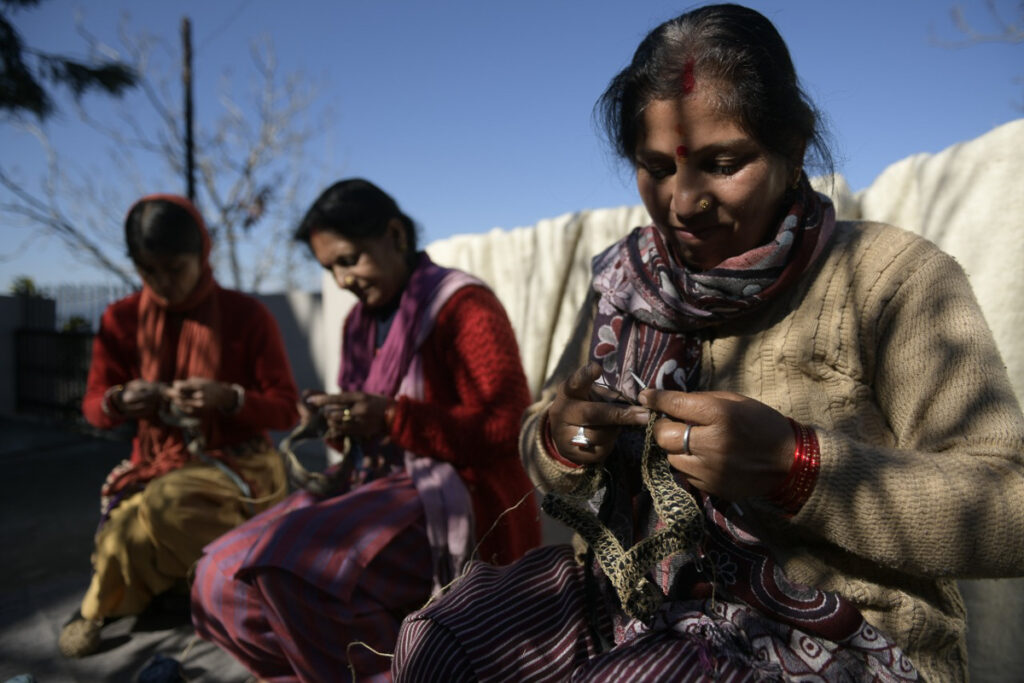
Primarily working on a decentralized model, we engage about sixty women artisans who are looking for opportunities to support their families economically by a means that lets them work from their homes. Image Shine Bhola
A strong belief in celebrating indigenous textile traditions forms the basis of our work approach. Simple, functional and aesthetic products have been derived from the local craft vocabulary using natural materials and dyes, for consumers who are sensitive about the resources used in the making of the item they purchase.
Handcrafted from their origin, these products are a celebration of the essence of ‘the Handmade’, of the agile fingertips measuring each length of yarn, of the lyrical narratives of the counted woven picks and knitted stitches and of the sensory experience of the granular earthy materials. Carded wool, cotton, silk, nettle and hemp are spun into soft supple yarn using a hand-held spindle or a Bageshwari Charkha, a foot-operated spinning wheel of indigenous make, and further hand-woven, knitted and stitched into contemporary garments. Each of these products is dyed using natural colours, dyes or colorants derived from natural sources. While helping keep our carbon footprint low, natural substances are soothing materials for the makers as well as the users in their respective contexts. Natural dyes produce living colour – a unique hue each time, a colour as it matures and ages, pays a tribute to the Sun, Water, Soil and Wind and celebrates the story of the source from which it has been cultivated.
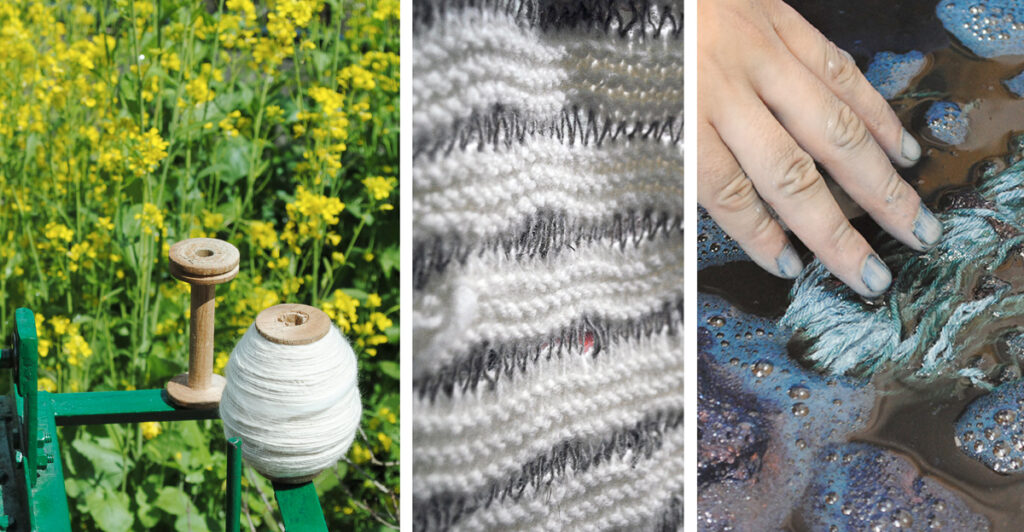
Stages of Production_ Yarn spinning, Knitted swatch, Indigo dyeing
Through our work, we propose a locally fuelled model of sustainable development. Indigenous raw materials like Harsil wool, Tibetan wool, nettle, hemp and dyestuffs sourced from local farming communities are used to craft winter and summer apparel. Ahimsa or Eri silk which is a variety of silk obtained without harming the silkworms, indigenous old world cotton—a more resilient and less water consuming variety of cotton grown without any synthetic fertilizers in arid climatic conditions and Merino wool imported from New Zealand are combined with the indigenous fibres to enhance their comfort and aesthetic appeal. A similar synthesis is applied in crafting the products where local craft skills like handloom weaving and knitting are ingeniously merged with hand embroidery, beadwork, shibori, etc.
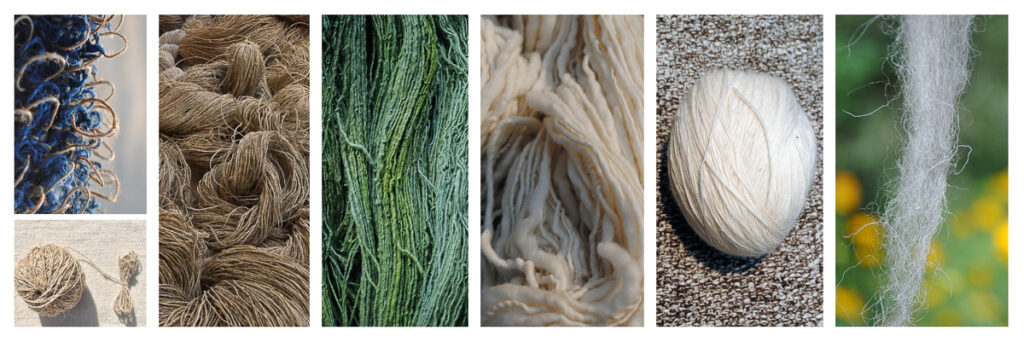
Natural raw materials (from left to right) Himalayan Nettle and Hemp, Cotton, Merino wool, Angora wool and Harsil wool
The synergy of various activities at our organization is a conscious effort towards the conservation of natural resources and leaving a light carbon footprint in the process. Harvested rainwater heated with solar energy is used for natural dyeing. Hand-done processes like hand stitching, hand spinning, etc. are used wherever possible to utilize unlimited human energy and reduce our dependence upon machines and non-renewable sources of energy. Earth-friendly chemicals and materials are used for the processing of textile materials.
- Using locally available raw materials like the seed coverings of a local plant called Mallotus Philippensis, also known as Kamala for extracting colour
- Using locally available raw materials like the dried petals of Rhododendron flowers for extracting colour
- Our vibrant natural dye colour palette explores the full spectrum of hues that we experience in the nature around us
Primarily working on a decentralised model, we engage about sixty women artisans who are looking for opportunities to support their families economically by a means that lets them work from their homes. This framework guides our entire design process at the studio, where it is our constant effort to develop products which are easy to interpret and process by the makers, and in return let them earn a sustainable livelihood, infusing a sense of pride and confidence in the humble craft they produce.
The alternative livelihood opportunities that we are able to provide using the local skill vocabulary also respond to the macro issue of population migration due to which the hill villages in many areas of Uttarakhand are deserted.
- The women artisans who form the backbone of our organization – experts at spinning, dyeing, knitting, embroidery
- Us with our core team of 10 women master artisans who further train and supervize the decentralized artisans. Image Shine Bhola
As an atelier, our attempt is to propagate aesthetics in the local craft vocabulary by allowing the craftsmen to experiment and explore their skills with pure and natural materials, bringing them a dimension closer to the actual craft tradition of the area that has probably gone extinct due to the invasive synthetic material culture.
- Archives of locally prevelant techniques knit using a combination of various handspun yarns like wool and nettle to create unique textures
- Fair Isle Shepherd_s Overcoat which has won the WCC Award for Excellence in Handicrafts 2018 for the Asia Pacific region and the Lexus Design award (India) for Textile Design in 2020
As a resource centre, we have been able to maintain a wide vocabulary of natural materials such as locally sourced dyestuffs – walnut hulls, rhododendron flowers, the seed covering of Mallotus philippensis, indigenous fibres such as Himalayan nettle and hemp and Harsil wool, colours and natural dyeing recipes, various woven and knitted patterns, which are rich references for designing products and help us in creating an aesthetic fusion of craft traditions and contemporary fashion.
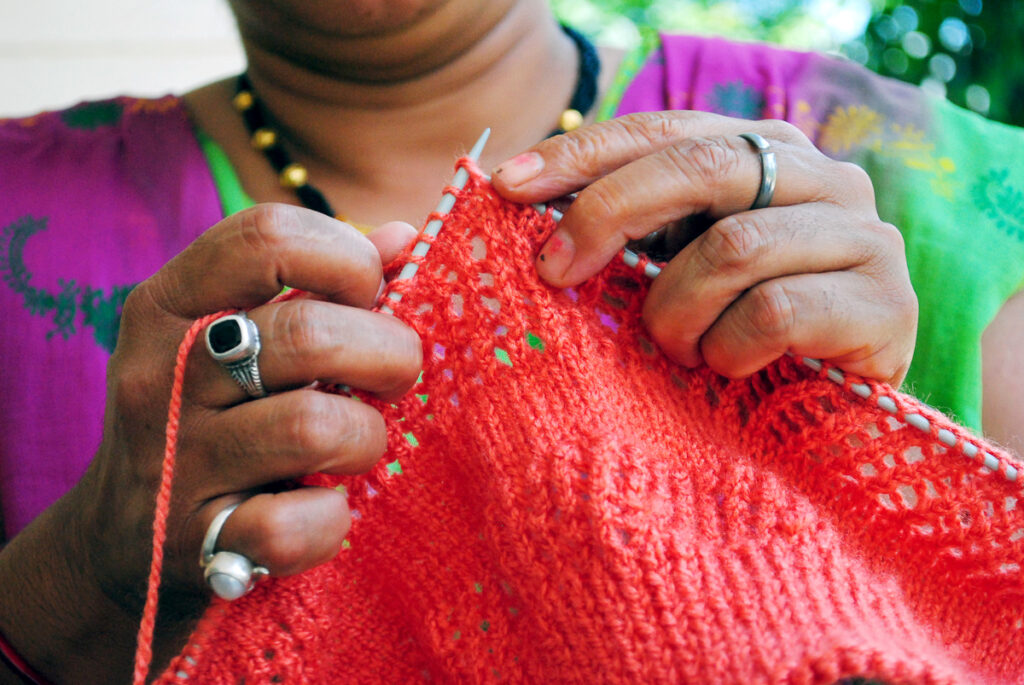
The dextrous hands and minds of the artisans creating myriad textures with the help of minimal tools – the needles and the yarn
In the five years of our operation, we have been successful at providing an international platform to this humble but meticulous craft from Uttarakhand; our journey has only begun and we wish to keep expanding our horizons. At the core of our work, we seek a balance guided by design thinking, of aesthetics and practicality, of craft and contemporary fashion, of commerce and a light carbon footprint, of consuming and giving back to the earth in the process. We stand for the life-giving River and the knowledge that is the Forest.

Using wool ranging from the Indigenous Harsil wool to Merino and Angora wool, handknit clothing and accessories are created through an amalgamation of various techniques like hand spinning, hand dyeing, hand knitting, hand weaving
To learn more about Peoli, visit www.peoli.in.


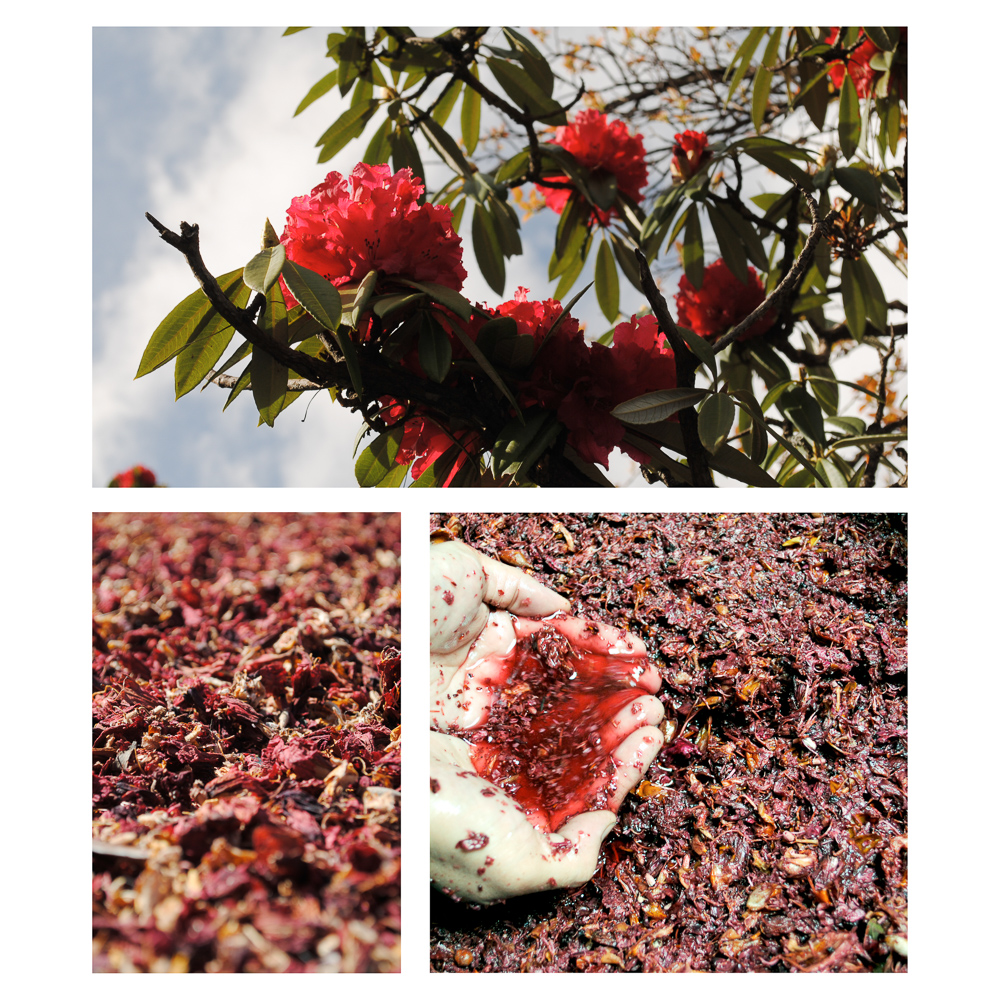
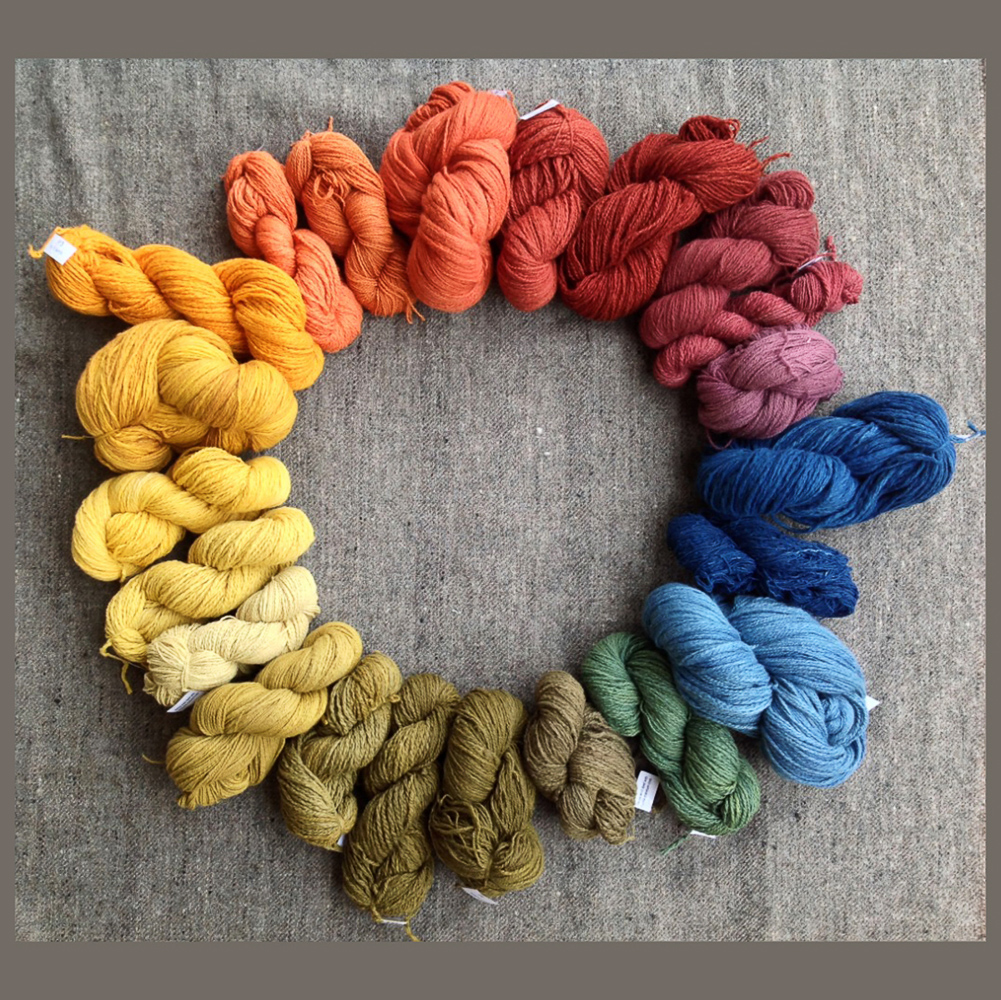
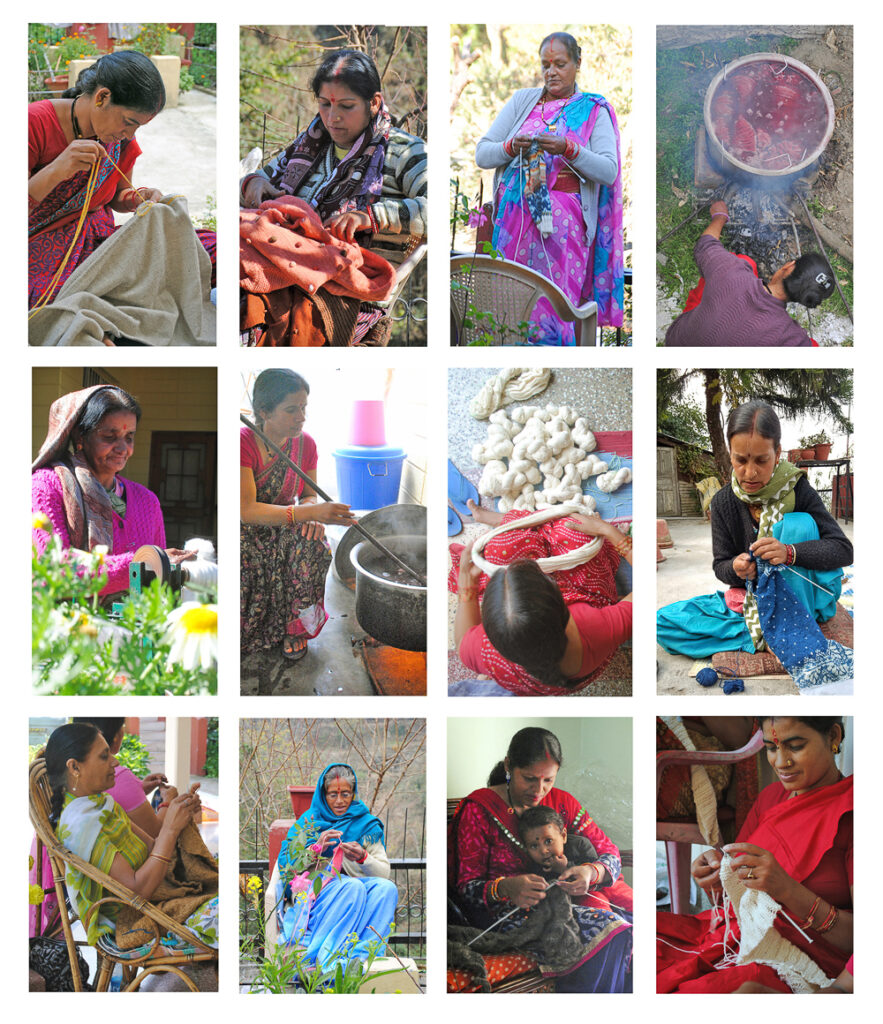
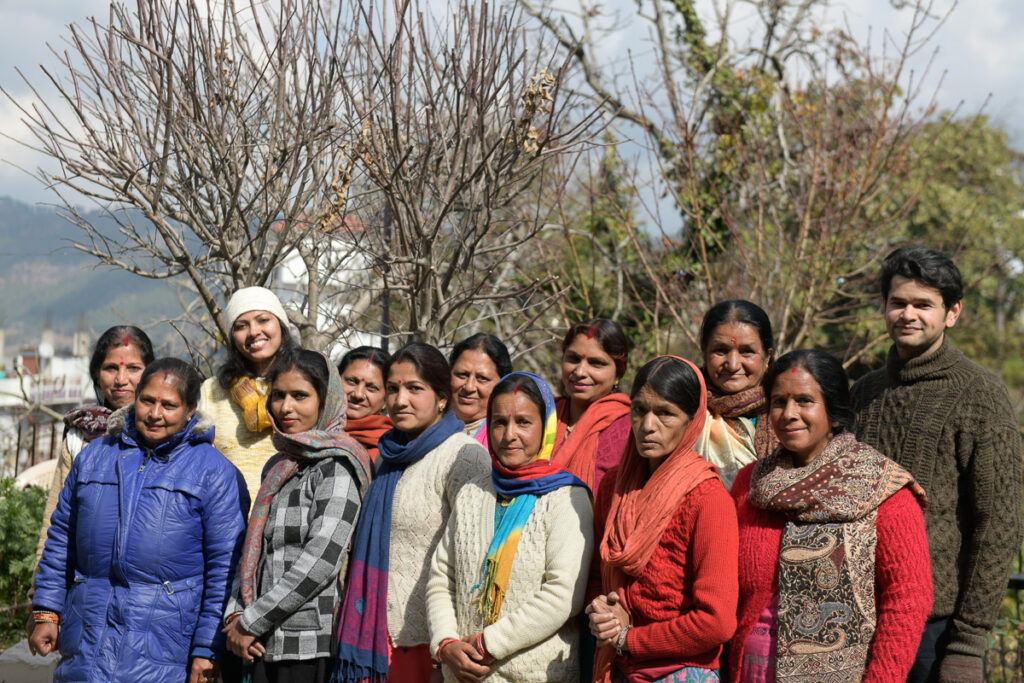

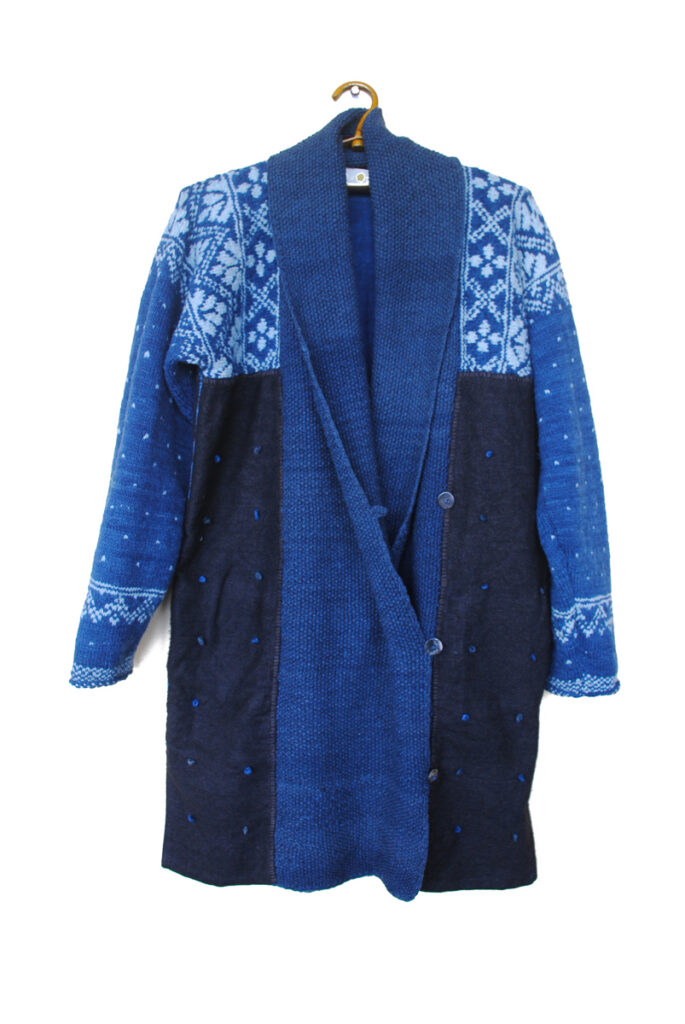

Comments
Very commendable! Vasanthi’s vision is inspired by her twin concerns of environmental protection and economic development of the local community. Keep it up!